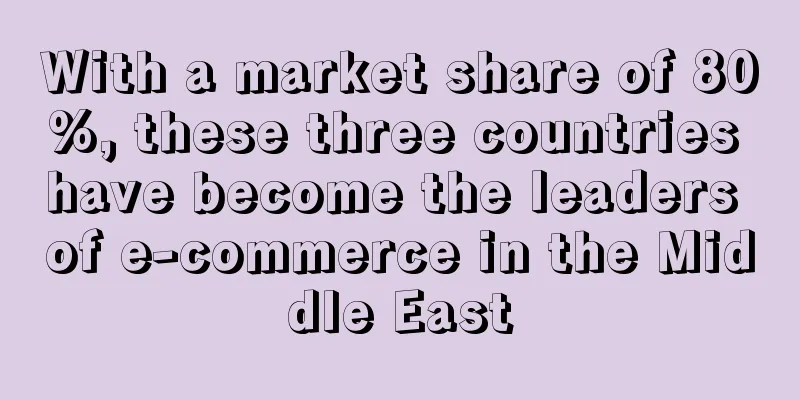With a market share of 80%, these three countries have become the leaders of e-commerce in the Middle East

|
By the end of 2020, the e-commerce market in the Middle East reached $22 billion, driven by online shoppers from Saudi Arabia, Egypt and the UAE. According to the report, Saudi Arabia, Egypt and the UAE account for 80% of the region's entire e-commerce market.
Data shows that by 2024, Saudi Arabia's market size is expected to reach $8.2 billion. But the UAE still has the largest market size. The report said that before the outbreak, the UAE's digital economy contributed 4.3% to the country's gross domestic product (GDP).
In addition, according to the Dubai Future Foundation, the UAE's e-commerce market will reach $62.8 billion by 2023. Dubai is one of the fastest growing cities in the UAE for e-commerce. According to the Dubai Chamber of Commerce and Industry, the size of Dubai's e-commerce market will reach $27 billion by 2022.
In Egypt, according to a previous report by Oxford Business Group, the size of Egypt's e-commerce market will reach US$3 billion by 2022.
These three countries are the main population centers in the Middle East, so it is reasonable that they occupy the main e-commerce market share in the region. Of course, the growth of e-commerce in the Middle East is also inseparable from the increase in investment in e-commerce by various countries, large-scale improvement of infrastructure, and more and more countries supporting online shopping.
Government regulators saw the potential of e-commerce before the pandemic. In 2017, the Dubai Airport Freezone Authority launched an $870 million project to build a free trade zone entirely geared toward e-commerce.
In 2019 , Saudi Arabia passed an e-commerce law aimed at protecting consumers from fraudulent transactions, a move aimed at boosting consumer confidence and stimulating the market.
The Wamda and MIT report notes that these efforts have contributed to the rapid growth of the region’s e-commerce industry, which is expected to grow another 35% this year to $30 billion.
The epidemic is good for e-commerce, but it is not so "friendly" to traditional offline entities. In order not to be overwhelmed by this wave, some offline retailers and supermarkets have begun to seek transformation. For example, Emaar Shopping Center and Majid Al Futtaim have invested heavily in digital construction and cooperated with technology companies to launch their own online shopping platforms. middle East E-commerce |
<<: Sales surged 30%! India's demand for household cleaning products is high amid the pandemic
>>: Poshmark performed poorly after its IPO and launched a video feature to attract sellers
Recommend
There are about 580,000 SKUs on sale, Shenzhen is selling well and is planning an IPO
Santai E-Commerce is heading for IPO again . Shen...
EU parcel volumes to UK plunge 51% after Brexit
According to research by shipping platform Sendcl...
LazMall promotion results are out, the number of consumers increased 37 times!
According to foreign media reports, the official ...
Olympic season! Sports brands achieve 3x growth in orders on AliExpress' "Super Explosion Day"
The Olympic Games are being held in Paris. While ...
With a total sales payment of 1.4 trillion won, Naver is hitting Coupang with 100% fast settlement of sellers' payment
Recently , Naver has taken action to counter Coup...
After several suspensions, the IPO of this cross-border blockbuster was "suspended" again...
"The issuer needs to combine the liabilities...
What is MORI? MORI Review, Features
MORI is a store that specializes in organic baby c...
What is Xiaohu e-commerce browser? Xiaohu e-commerce browser Review, Features
Tigerkin Browser was founded by Guangzhou Houshan ...
What is Genesis? Genesis Review, Features
Genesis Capital Markets Software Provider. About ...
What is FTW1? FTW1 Review, Features
FTW1 warehouse is a new warehouse for Amazon FBA ...
What is Meishe International? Meishe International Review, Features
Meishe International (Shanghai Meishe Logistics Co...
Amazon has bad news again, sporting goods sellers may be restricted
As the leader of the four major professional spor...
What is Bank Fric? Bank Fric Review, Features
Bank Fric is a digital bank in Liechtenstein, Eur...
The peak season is here! These home products will be hot sellers
In March, home furnishings such as garden tools, ...
What is 2cshop? 2cshop Review, Features
2Cshop cross-border e-commerce independent station...









